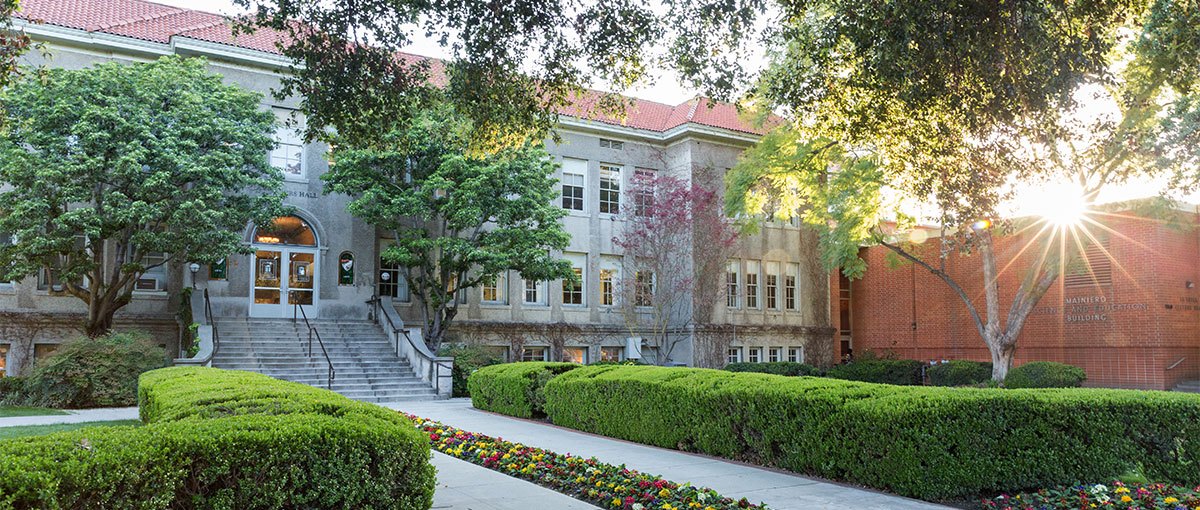How your contribution to La Verne can diversify your investments
If you are fortunate enough to own an asset, such as real estate or securities, that has increased in value, you may be grappling with a dilemma: if you sell you will have to pay capital gains tax on the growth in value. Perhaps you’ve considered selling that investment – maybe to seek higher income or just because you are tired of managing it – but the capital gains tax, which will be at least 15% for most taxpayers, could significantly reduce the net proceeds and decrease your investment income in the future.
A charitable remainder trust (CRT) can help increase your income by diversifying your investment without worrying about capital gains taxes. You pay no capital gains tax when you transfer long-term appreciated assets to a charitable remainder trust and, because the CRT is tax-exempt, there is no capital gains tax when the trust sells appreciated assets. A charitable remainder trust provides an opportunity to diversify your investment and put the full value to work earning income for you.
And, because you will be making a generous future contribution to the University of La Verne, you will receive a charitable deduction that can reduce your income taxes too.
How a charitable remainder trust works
- You transfer money, property, or other assets to a trust.
- You choose a trustee to oversee the operation of your trust or work with the University of La Verne to select a trustee.
- You choose the income beneficiaries of the trust. Beneficiaries can include yourself, your spouse, loved ones, or anyone else you wish.
- Your trustee manages the trust assets and pays income each year to the income beneficiaries.
- The income paid to beneficiaries can be same amount each year, offering the security of fixed payments, or can be a percentage of the annual value of the trust, offering the opportunity for payments to grow over time.
- When the trust ends, usually upon the passing of the income beneficiaries, the remaining assets go to the University of La Verne to be used as you direct.
Example
Bob and Nan, ages 68 and 65, own a rental property, a duplex they acquired many years ago. They are pleased that the property has appreciated and is now worth $500,000, especially considering that they only paid $100,000 for it.
Over the years they’ve collected a modest but steady rental income from the property and they’ve been fortunate to have good long-term tenants. Nevertheless, Bob and Nan are growing weary of the headaches of property management and are wary of what will happen when their tenants turn over in the future. In addition, they would like to increase the income from their investments.
Bob and Nan’s dilemma is that, if they sell the duplex, they will owe a tax of $60,000 (15% of $400,000), which would reduce the income they could earn when the net proceeds are renivested.
Instead of selling their duplex, paying the capital gains tax, and reinvesting the after-tax proceeds, they contribute the property to a charitable remainder paying them 5% of the value of the trust fund each year. At the end of their lifetimes, the trust will contribute whatever remains in it to the University of La Verne.
The trust can sell the property pay no tax on the gain, allowing it to reinvest the entire $500,000 to earn income. In the first year the trust will pay Bob and Nan $25,000 (5% of $500,000). They understand that their trust income will vary in the future and, if the trust’s investments perform well, their income may increase each year.
In addition, Bob and Nan will receive an income tax charitable deduction of $320,000*, which they can use to reduce their income taxes. They receive this deduction because, at the end of their lifetimes, their CRT will contribute its remainder to the University of La Verne.
*The actual amount of the charitable deduction will depend on the value of the asset contributed, the ages of the beneficiaries, the trust payout rate, the timing of the trust payments, and the IRS discount rate in effect at the time of the contribution.
A charitable remainder trust, tailored to your unique circumstances can:
- Increase your cash flow
- Provide additional income
- Reduce income taxes now
- Avoid capital gains tax
- Allow you to make a significant contribution to the University of La Verne
Please contact Anthony Todarello at 909 448-4674 or atodarello@laverne.edu for further information or for an illustration showing how a charitable remainder trust could help you.
Because everyone’s situation is different, we encourage you to seek professional legal, estate planning, and financial advice before deciding on a course of action. This information does not constitute legal or financial advice and should not be relied upon as a substitute for professional advice.

